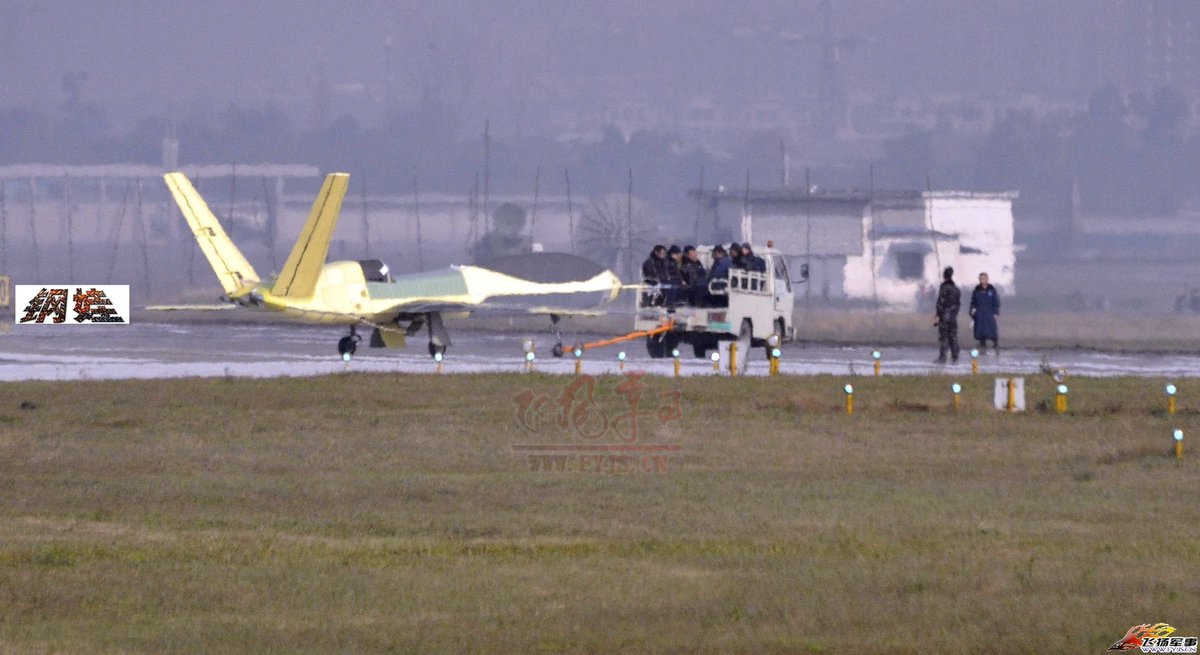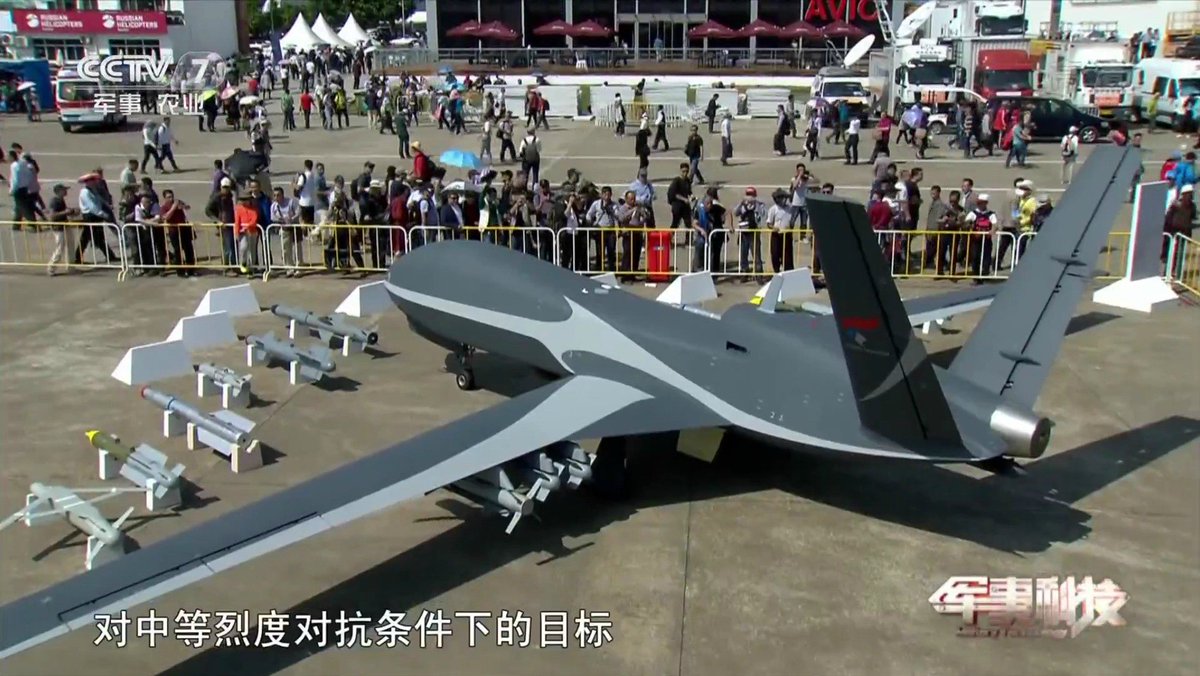I am even more interested in what unit operates that bird and where ?
I'd be interested to see what the paint scheme of service birds are like as well... so far we haven't seen the plane in anything other than variations of yellow primer.
I am even more interested in what unit operates that bird and where ?



I think all the members are autonomous and equal in the chain of comamnd? A leader drone could become a choke point or even the weakest link.drone leader
Regarding the "drones in a swarm", the core tech is the sensor and algorithm for drones to detect obstacles and distance/course/vector of other drones. All these principle techs have been put in real life, on the market. One can buy a drone having all these techs for 999$, the DJI Mavic
Now replace that human leader with a drone leader, replace the imagery sensor (BTW, more difficult than) with a electro/optical sensor, you get the swarm.
- The "No bumps and scrapes" feature help it to automatically avoid obstacles.
- The "Follow me" feature makes it keep a fixed distance, same course, speed and same vector to its "leader", the owner by imagery recognition.
If DJI is hired by PLA, I am sure the cost for PLA project will be very low as the basic development cost has been paid by commercial buyers already.
The tech is there already, and it is not like rocket science, just need to do it CHEAP ENOUGH to make the swarm viable. In this regards, I think DJI has the lead and by extension PLA has the lead.
I have mentioned the difference, imagery sensors vs. electrical sensors. Note, Mavic use GPS too to return to a designated landing point.No, I think the technology used by drone swarms like what the Pentagon and CETC demonstrated is quite different to what you described.
The object avoidance of Mavic and other DJI drones is done by optical object avoidance sensors and sonar sensors (and IR sensors in the DJI Phantom 4 Pro) -- but on the drone swarms, I believe the technology for flight avoidance are not done via sensors embeded in each aircraft itself but by each aircraft in the swarm knowing where the other is via satellite guidance+telemetry, and automatically adjusting their flight if two aircraft reach a certain danger zone of each other via some sort of common datalink and processing.
More importantly, the active track feature and follow me feature of DJI drones are based on visual object recognition and following the signal of the controller respectively. It is useful for keeping track of a moving object (so long as it isn't moving too fast and so long as it isn't too small and/or too similar to the background!), but it is vastly different to what is necessary in a true drone swarm and to control a true swarm as a collective entity rather than merely assigning one drone to follow another through visual object tracking or following a single signal.
No worries, I am not DJI salesman.Dont' get me wrong, DJI's drones are the most advanced on the consumer and professional civilian market, but they're completely different to what a drone swarm is meant to demonstrate. I believe the hard part of drone swarms is to develop the datalinks, processing, and control mechanism for a large number of aircraft simultaneously to function as an efficient swarm, where each drone is able to talk effectively with one another as well as the controller.
That is only because they don't need this functionality. With the size of it bigger than the Pentagon drone, stuffing all these are matter of necessity and whether ordinary Joes are willing to pay or not. The consumer market don't need them, so DJI didn't make them, but if DJI is hired by PLA to add them, they surely can.OTOH, standard consumer drones like DJI drones lack any of the ability to datalink and talk with other drones -- and while they may be equipped with impressive cameras and impressive ability to datalink with their own single controller/screen and object avoidance abilities, they fundamentally lack any ability to talk to each other... which makes sense because drone swarms have no utility in the civilian/consumer market.
But these applications don't need the kind of resilience and high availability that swarms provide. Multiple standalone drones can work just as good?I do see there is a civilian market for the swarm. Police surveillance, search and rescuer over a vast area are two applications that I can think of.
I have mentioned the difference, imagery sensors vs. electrical sensors. Note, Mavic use GPS too to return to a designated landing point.
All other differences are essentially SW algorithm. It is difference of quantity rather than quality (capability). One following one object vs. many following one, SW scaling up. In distributed computation, once you make the architecture works between two CPUs, making 16, 32 and 64... working is relatively easy, the barrier has been crossed.
Also remember, the CETC demonstrated object avoidance in the video where drones took off in a field of wind farm with lots of wind turbines. That has to be done by something like sonar sensors, same principle as Mavic avoiding a tree in the path.
No worries, I am not DJI salesman.
The DJI drone is even bigger than the Pentagon drones, making it possible to house more powerful processors and sensors to do all the "datalinks, processing, and control mechanism" thing. The matter is only necessity instead of capability.
That is only because they don't need this functionality. With the size of it bigger than the Pentagon drone, stuffing all these are matter of necessity and whether ordinary Joes are willing to pay or not. The consumer market don't need them, so DJI didn't make them, but if DJI is hired by PLA to add them, they surely can.
All I am saying is not to prove anything about DJI, but trying to say the fundamentals are vastly and easily available in the hands of Engineers, American and Chinese doesn't matter. I was using DJI to refute the notion of "Pentagon drones is a step ahead of anybody.", they are not, not even ahead of a consumer company because it is doable and has already been done (to some degree).
P.S. I do see there is a civilian market for the swarm. Police surveillance, search and rescuer over a vast area are two applications that I can think of.
Yellow paint does not indicate it is not in service. When Liaoning start operation all the J15 flying from her deck are in yellow paint, On different subject...
...
The PLA Army Air Corps seems to be adopting the same series machine of the Cloudshadow reconnaissance,attack unmanned aircraft (1st photo) exhibited at the 2016 China Air Show, the cloud shadow reconnaissance,attack unmanned aircraft vehicle (2nd photo).
...
Sorry, but that's definitely NOT correct. Any aircraft in yellow primer is still in test. There is no, not a single one operational that is not painted in any operational colour scheme.
Especially Your example with the very first J-15-landings is a prime example and there for completely off: The first carrier landings onboard the Laioning were made by test-pilots. When in November 2012 the prototypes #552 and 553 made their first landings, the J-15 was still in test. Handover to the PLANAF was only about one year later in late 2013.
Deino
